Epically Soviet Images from Aeroflot of Classic Aircraft
Soviet airline memorabilia to break the ice
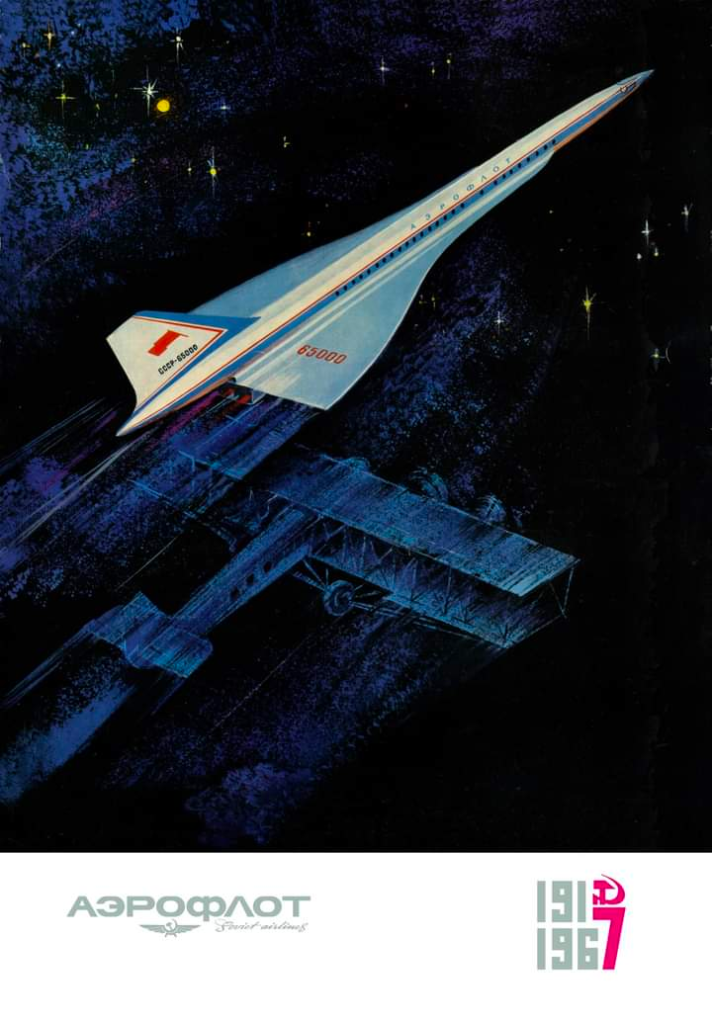
There’s a particular exotic glamour to artefacts from the Soviet-era Aeroflot airline. Perhaps this why one of my favourite aviation books of recent times was the exquisite Fuel book of the Aeroflot ephemera of Bruno Vandermueren. With this in mind I tracked down Bruno to choose his 10 favourite pieces from his collection.
10. Timetable winter 1937-38
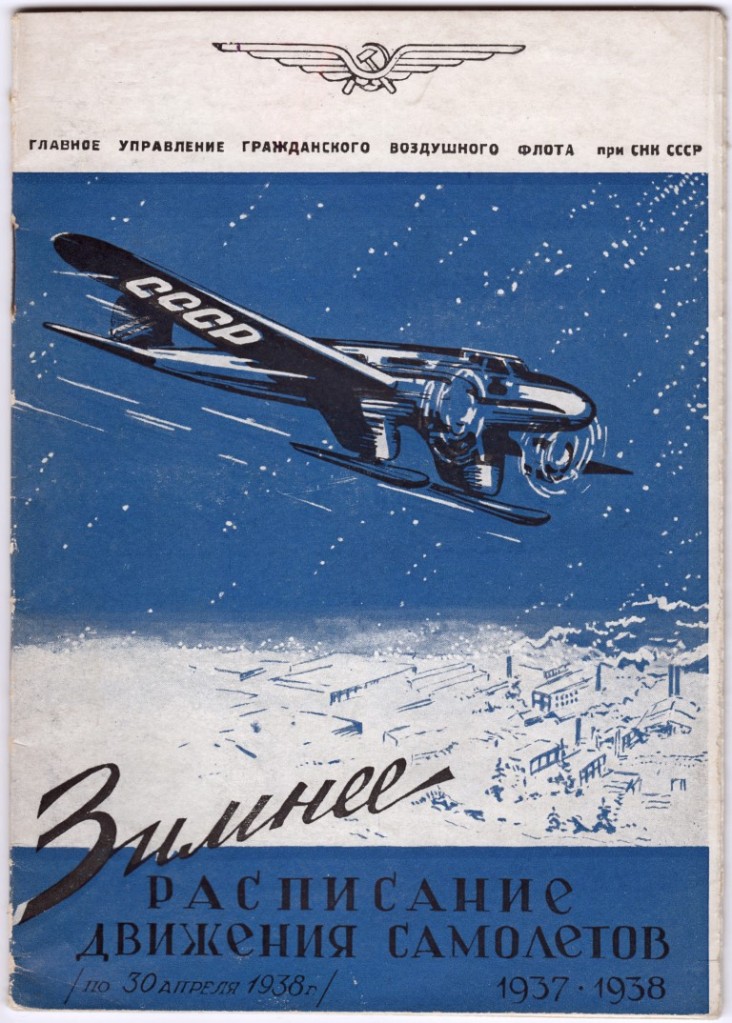
On the cover, a PS-89 equipped with skis flying in a snow storm over an industrialised town. It was at the height of the Stalin’s Great Purge.
Only 8 of these aircraft were build and a timetable from this period is almost as rare as the aircraft itself. This particular copy I picked up in Kiev a few years ago thanks to one of my local contacts.
9. ‘Riga-Moscow-Riga’
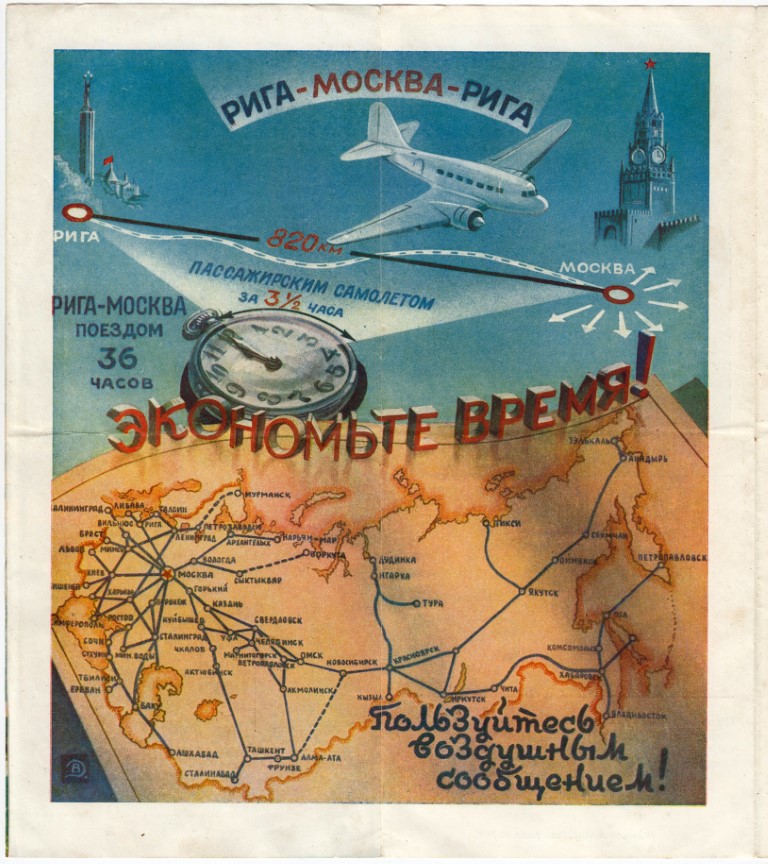
Save Time! Use Air Transport! Riga – Moscow, 820km. By train 36 hours. By passenger airplane 3,5 hours’. The map shows the entire USSR with the Aeroflot trunk routes.
The brochure is undated but seems to be from the early 1950s. In those days, publicity used the slogan ‘Use Air Transport’ without mentioning ‘Aeroflot’. It was a time when most long distance travel was done by train. Colorful promotional brochures started to appear to entice the population to fly by airplane instead. This plane – train comparison of travel times and ticket prices was common until the early 1970s.
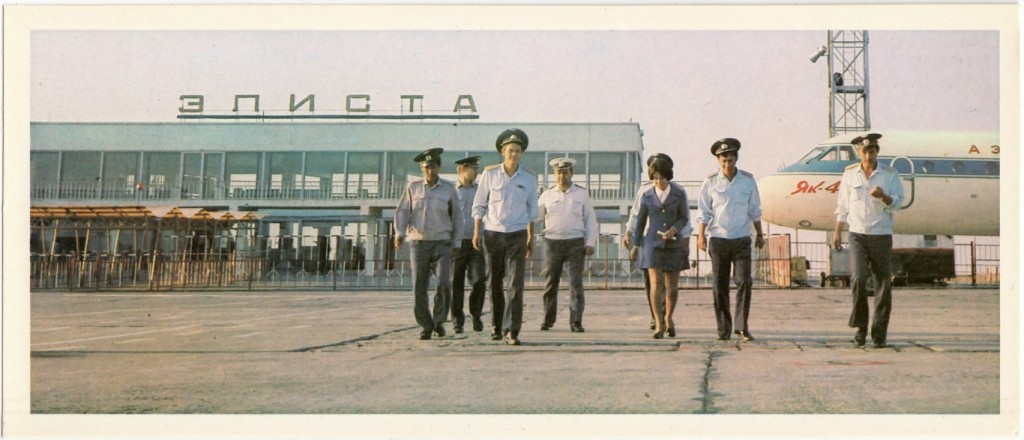
8. Brochure describing the Moscow – Khabarovsk route

Long distance routes in the early 1950’s were quite an undertaking. The Ilyushin Il-12 made 8 intermediate stops: Kazan – Sverdlovsk (now Yekaterinburg) – Omsk – Novosibirsk – Krasnoyarsk – Irkutsk – Chita and Tygda. Total flight time was 22 hours while the total journey took some 33 up to 42 hours, depending on the schedule. This was in case everything went as planned but during the first years in Aeroflot service, the Shvetsov Ash-82FN engines weren’t very reliable and had to be overhauled every 100-150 hours.
The brochure was designed by Sergey Sakharov, one of the leading artists in Soviet advertising creating famous posters for vodka, cigarettes and fruit juice. His work for Aeroflot included several posters and my collection includes other brochures of his hand like ‘Moscow – Tbilisi’, ‘Moscow –Tashkent’ and ‘International Air Routes of the Soviet Union’. I’m still trying to find ‘Air Routes to the Resorts of the Caucasus’, ‘Air Routes to the Resorts of Crimea’ and ‘Moscow – Tashkent’ but it’s like looking for a needle in a haystack.
7. Timetable for summer 1960 of the Estonian Aeroflot Directorate

It depicts the Tallinn skyline as seen from the beach and an Ilyushin Il-14 is flying overhead.
Local timetables are among my favorite Aeroflot ephemera. Although most were not as colorful as this one, they always make for interesting reading. Often the schedule was simply printed in a local newspaper. In the USSR, even many small villages and settlements had an airfield, grass strip or a nearby river which could be used to land, in total some 3,500. Some of them are difficult to find on a map. This led me to draw local route networks based on these timetables. Nowadays, literally thousands of these places in the ex-USSR are not connected by air anymore.
Order The Hush-Kit Book of Warplanes Vol 1 here.
6. Civil Aviation magazine 11/1962 ‘Under the Aeroflot Emblem’ by A. Kirillova

This monthly magazine never had a high circulation and, as with other ephemera, most copies were simply thrown away over time. I’m still missing several editions but this cover from November 1962 with the Tupolev Tu-104 and Aeroflot hammer and sickle logo is definitely among my favorites with still some influence of constructivism.
5. Antonov An-10A brochure published by ‘Avtoexport’ (Car export) before ‘Aviaexport’ was established in 1961.

After a crash near Kharkiv in 1972, the first Soviet turboprop airliner vanished from Aeroflot service. For this reason, the An-10 is often overlooked although it played an important role in the development of Aeroflot.
Its cargo twin sister, the An-12 has proven to be a tireless workhorse. Even today, half a century after production ended in 1973 and the grounding of the An-10 fleet, several An-12 are still flying regularly in the service of cargo operators from ex-Soviet countries. While writing this, I can hear the hum of a Cavok Airlines An-12 flying at 20,000ft over my home near Brussels and whenever I can, I visit Ostend airport to see them in action up close.
4. Tupolev Tu-144 cigarettes produced in Moscow by the Java tobacco factory for Aeroflot’s 50th anniversary in 1973. At the time, it was still common to smoke on board an airplane.

Several years after I acquired this cigarette pack, I saw a picture of a similar one depicting an Il-18. Only then I realised it must have been part of a series of cigarette packs depicting the aircraft types in the fleet. It would take another decade before I stumbled across the entire box set of 10 cigarette packs for sale on eBay by a British seller. It contains the An-24, Il-18, Il-62, Mi-8, Tu-104, Tu-124, Tu-134, Tu-144, Tu-154 and Yak-40. The fact that I never found these cigarettes in a former Soviet country was because they were, most likely, only sold in the Soviet ‘Beriozka’ shops. These shops sold luxury goods to foreign tourists in exchange for foreign currency and were not frequented by the local population.
3. Panoramic postcard from 1979 of an Aeroflot flight crew at Elista airport, North Caucasus
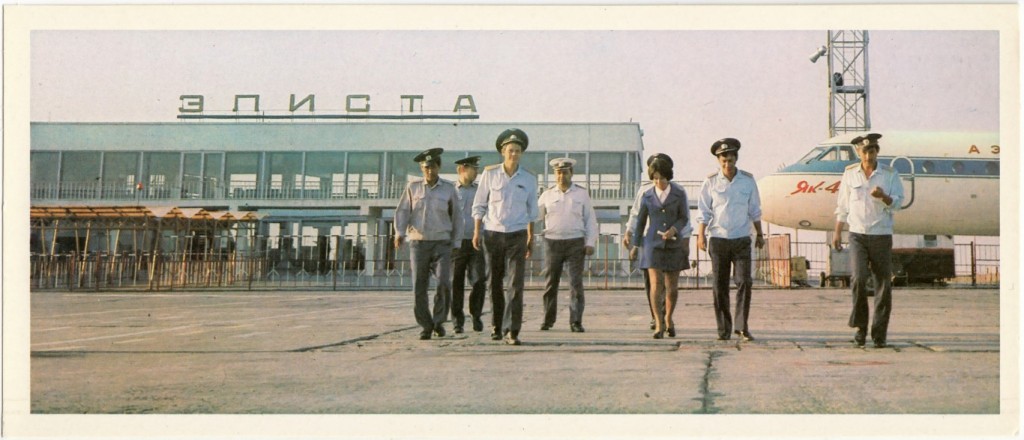
Among the many hundreds of Soviet airport postcards, it remains one of my favorites. It expresses the typical atmosphere of a Soviet regional airport: the crews, a Yak-40, the airport terminal with the waiting area outside and the rough concrete surface. Only the passengers, stray dogs and an old ZIL fuel bowser are missing.
2. Promotional brochure showing the Ilyushin Il-86 take-off from its birthplace Moscow-Khodynka airfield
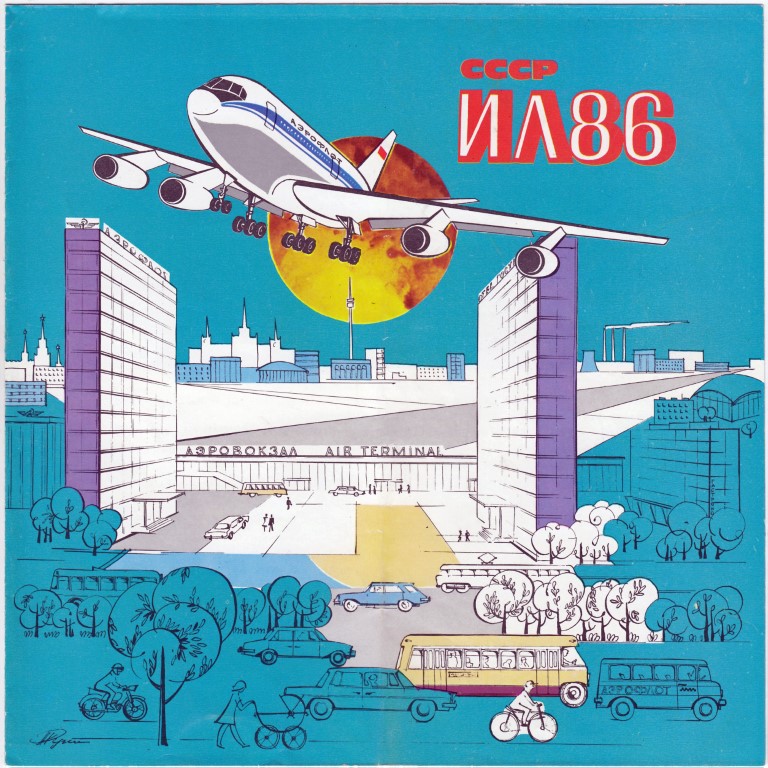
The two almost identical buildings are the Aeroflot hotel and the administrative building with in between the Moscow City Air Terminal where passengers could check-in, drop off their luggage and choose direct transport to their airport of departure.
When I was in Moscow in 2017, the air terminal was about to be demolished. New shopping malls and other buildings were erected everywhere around but while walking in that area, one could still witness the presence, or at least the remnants of a great aviation legacy. Several aircraft design bureaus were located at the Khodynka field, not in the least the Ilyushin bureau. All Il-12, Il-14 and Il-18s had been constructed there, as well as the prototypes of the Il-62 and Il-86. It must have been quite a sight seeing them take off from the heart of the city.
- Moscow – Algiers – Conakry – Dakar by Ilyushin Il-62

To conclude this nostalgic journey through Aeroflot ephemera I’ve chosen an advertisement announcing the new weekly service Moscow – Algiers – Conakry – Dakar by Ilyushin Il-62 on the back cover of ‘Soviet Union’ illustrated magazine of February 1969.
Flight SU-065/66 departed Moscow Sheremetyevo every Thursday morning, stayed overnight in Dakar to fly the same route back to Moscow arriving on Friday just before midnight. Inflight service on international flights was always of a high standard and the Il-62 was definitely one of the most comfortable airliners of its time.
Back then, in the winter of 1968-69, Aeroflot operated regularly to 48 international destinations. By 1990 this number had risen to 119. Most of them out of Moscow but also a few out of Leningrad, Khabarovsk, Irkutsk, Kiev, Minsk, Tashkent, Yerevan and Vilnius.
The world and the aircraft have changed a lot since then but these ads continue to inspire and make one wants to travel, not only to a new destination but also back in time.


Order The Hush-Kit Book of Warplanes Vol 1 here.
Or subscribe to our free newsletter here and get jet-noise straight into your inbox

nice post.
I flew once in a IL-86. Interior was comfortable but outdated even at the time…
I remember a smooth landing in thick fog (practically 0 visibility)